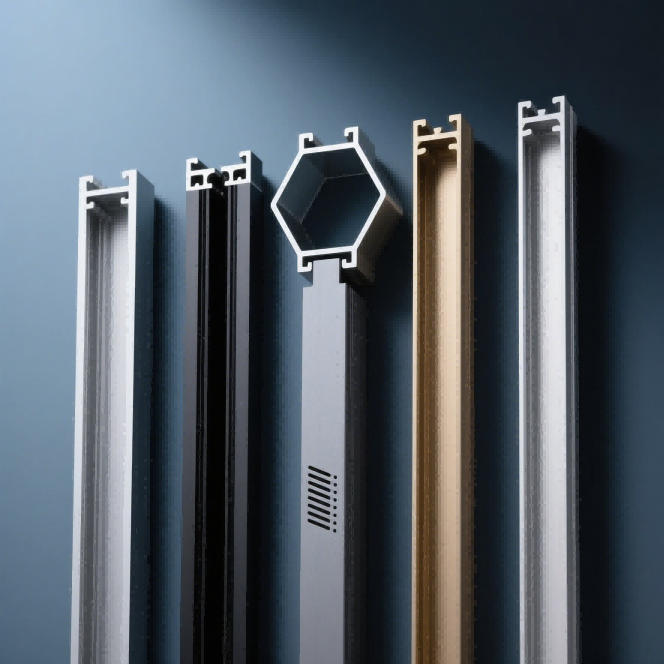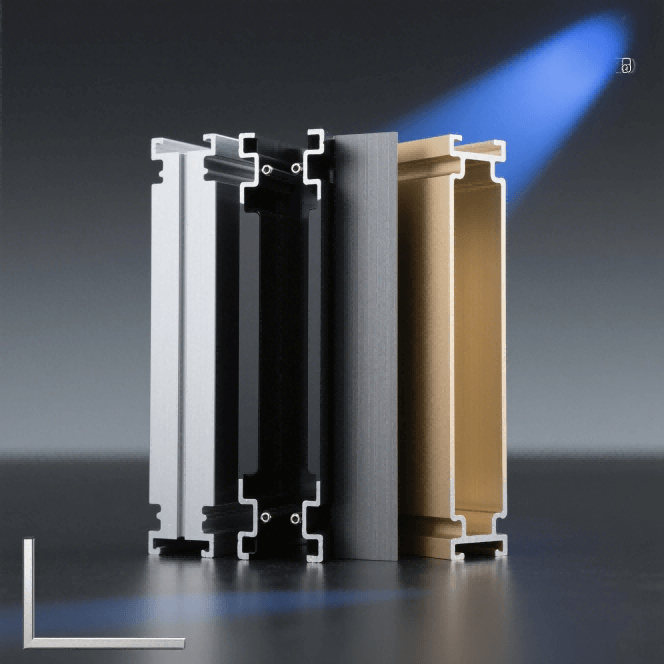
Is Aluminum a Magnetic Material? Tests, Numbers, Real Uses Aluminum Magnetism Explained Simply Quick answer to is aluminum a magnetic material Ever grabbed a fridge magnet and wondered, “Will a magnet stick to aluminum?” The quick answer: no, magnets do not stick to aluminum under normal conditions. While aluminum is a metal, it isn’t ferromagnetic. Instead, it’s a weakly paramagnetic material, meaning it only shows a faint, temporary response to external magnetic fields. This distinction is more than just trivia—it’s crucial for engineers, designers, and anyone choosing materials for electronics, aerospace, or medical equipment in 2025 and beyond. Paramagnetism vs ferromagnetism in plain English Sounds complex? Let’s break it down. Most people think of metals as magnetic because iron and steel are strongly attracted to magnets. But not all metals behave this way. Here’s a quick guide to the three main types of magnetic behavior: Ferromagnetic: Materials like iron, nickel, and cobalt. Magnets stick to them firmly. They can become magnetized themselves. Paramagnetic: Materials like aluminum. They have unpaired electrons that weakly align with a magnetic field, but the effect is so slight you’ll never notice it in daily life. Remove the magnet, and any weak alignment vanishes instantly. Diamagnetic: Materials like bismuth and copper. These actually repel magnetic fields ever so slightly. So, is aluminum magnetic? Technically, yes—but only in a way that’s so weak it’s considered non-magnetic for practical purposes. Its volume susceptibility (χ) is about +2.2×10-5, and its relative permeability (μr) is approximately 1.000022. For comparison, ferromagnetic materials have μr values in the hundreds or thousands, making aluminum’s response negligible. Everyday test results and what they really mean If you try to stick a magnet to a soda can or a piece of aluminum foil, nothing happens. That’s because the atomic structure of aluminum doesn’t allow for the strong magnetic domains found in iron or steel. Instead, aluminum’s electrons only create a fleeting, weak magnetic moment when exposed to a strong magnetic field, which disappears the moment the field is gone. So, if you’re searching for an aluminum magnetic material for your next project, you’ll need to look elsewhere—or rethink what “magnetic” really means in this context. Ferromagnetic: Sticks to magnets (iron, steel, nickel) Paramagnetic: Weak, temporary attraction—no sticking (aluminum, magnesium) Diamagnetic: Very weak repulsion (bismuth, copper) But what about those odd cases where magnets seem to “interact” with aluminum? That’s where special effects come in: Eddy currents: When you move a magnet quickly near aluminum, you might feel resistance or see a falling magnet slow down inside an aluminum tube. This isn’t attraction—it’s due to induced currents that create a temporary opposing magnetic field (more on this later). Superconductivity: At extremely low temperatures (below 1.2 K), pure alumin...
Read More
Self Etching Primer for Aluminum: When It Fails—and What Works Understand Self Etching Chemistry on Aluminum Ever wondered why paint sometimes peels off aluminum, even after you’ve used a primer? The answer often lies in the unique chemistry of aluminum and the type of primer you choose. Let’s break down what makes a self-etching primer for aluminum different, how it works, and why it matters for your project in 2025 and beyond. What self-etching means in practice When you hear "self-etching primer," think of a product designed to do more than just stick to bare metal. These primers contain acidic components—commonly phosphoric acid—and zinc pigments. When sprayed onto aluminum, the acid reacts with the surface, microscopically etching the naturally occurring oxide layer. This creates a series of tiny anchor points, allowing the primer to bond more effectively to the metal. The zinc pigment further enhances adhesion and provides some corrosion-inhibiting properties. So, what does self etching primer do? It chemically prepares the surface, promoting better primer and topcoat adhesion than mechanical abrasion alone. But it’s important to recognize that this primer is not a complete corrosion barrier by itself. As shared by experienced builders, aluminum self etching primer is best used as part of a full paint system, not as a standalone protective layer (reference). How self-etching chemistry bonds to aluminum Aluminum is a reactive metal. The moment it’s exposed to air, it forms a thin, hard oxide skin. While this layer offers some natural protection, it can prevent paints or coatings from sticking well. Self-etching primer solves this by using acid to break up and partially dissolve the oxide, allowing the zinc and resin system to penetrate and create a chemical bond. Imagine the primer creating a molecular handshake between the aluminum and the paint system—this is what makes etching primer for aluminum so effective for initial adhesion. Key takeaway: Self-etching primers create a chemical key for paint to grip onto, not just a roughened surface. This is crucial for reliable adhesion, especially on complex or thin aluminum parts. Self-etch vs epoxy primers on bare aluminum Here’s where things get interesting. Epoxy primers and self-etching primers both help paint stick, but they work differently: Self-etching primer: Uses acid and zinc to chemically etch and bond to aluminum’s oxide layer. Best for freshly abraded surfaces, hard-to-reach geometries, or thin sheet metal. Epoxy primer: Relies on its resin chemistry and a mechanically roughened surface to anchor itself. Offers superior corrosion resistance and durability, but may not bond as well to unabraded or highly polished aluminum. Still unsure which to use? Here’s a quick checklist: Use self-etching primer for: Freshly abraded aluminum Intricate shapes or small parts Thin sections where mechanical abrasion is risky Consider epoxy or other systems for: Maximum corrosion resistance Areas expos...
Read More
Can You Powder Coat Aluminum? Yes: Here's How To Make It Last Yes You Can Powder Coat Aluminum in 2025 Wondering if you can powder coat aluminum? The answer is a resounding yes—when you follow the right steps, aluminum takes a powder coat finish exceptionally well. In fact, powder coating aluminum is one of the most effective ways to protect and beautify this versatile metal for both industrial and architectural applications. Why Powder Coating Works So Well on Aluminum Powder coating is a dry finishing process where charged polymer particles are sprayed onto a grounded aluminum part. The powder adheres electrostatically and, when cured in an oven, melts into a continuous, durable film. This process delivers several clear advantages: Outstanding corrosion resistance: The powder coat acts as a barrier, shielding aluminum from oxidation and harsh environments—even outdoors or near saltwater. High impact and scratch resistance: The thick, uniform film resists dings, abrasion, and daily wear better than most liquid paints. Vivid, stable color: Nearly any color or texture is possible, with excellent UV stability and minimal fading over time. Cost-effective over the long term: While the initial investment may be higher than paint, the reduced need for touch-ups and longer service life often mean lower lifetime costs. Real-world examples of powder coated aluminum include wheels, window frames, marine furniture, extrusions, signage, and playground equipment. Whether you’re specifying parts for architecture or manufacturing, aluminum powder coating delivers both protection and aesthetics that last. Powder Coating vs Paint vs Anodize Let’s break down how powder coating aluminum compares to other popular finishing methods: Finish Type Durability Color Options Reparability Cost per Year Powder Coating High (10–20 yrs outdoors) Extensive Moderate Low Liquid Paint Moderate (2–5 yrs outdoors) Extensive Easy Higher Anodize Very High (15–30 yrs+) Limited (mainly metallics) Difficult Low/Moderate While anodizing offers unmatched wear and corrosion resistance, powder coating provides a thicker, more versatile finish with broader color choices and easier application for complex shapes. Paint is best for budget or DIY projects but falls short on longevity and protection. Key Benefits You Can Expect in 2025 Powder coating aluminum delivers up to 20 years of outdoor durability with proper prep and care. The process is environmentally friendly—no VOCs, and overspray can often be recycled. Suitable for everything from architectural facades to marine-grade equipment. Conservative, field-proven film thicknesses: 60–80 microns for architectural use, cured at 180–200°C for 10–20 minutes (always check your powder TDS). Meets industry standards such as ASTM D3359 for adhesion and AAMA 2603/2604/2605 for architectural performance. Debunking Common Myths About Powder Coating Aluminum "Powder won’t stick to aluminum" – False. With correct surface prep, powder adheres strongly and...
Read More
Black Aluminum Fence Buyer's Playbook: Codes, Costs, ROI Why Black Aluminum Still Leads For Style and Performance Ever looked at a fence and thought, "That’s exactly what my property needs"? If so, you’re not alone. As we step into 2025, the black aluminum fence continues to dominate both residential and commercial landscapes — and for good reason. Let’s break down what makes this fence style a smart, modern choice. What Is a Black Aluminum Fence? At its core, a black aluminum fence is constructed from lightweight, high-strength aluminum alloys, typically powder-coated in a rich black finish. This powder coating isn’t just about looks: it provides a durable barrier against rust, UV rays, scratches, and fading, ensuring your fence keeps its sharp appearance for years. Modern systems often use 6000-series alloys (such as 6063-T5), prized for their balance of strength and formability, making them ideal for intricate aluminum fence designs. Corrosion resistance: Aluminum doesn’t rust, even in humid or rainy climates. Low maintenance: No need for annual painting or staining—just rinse with a hose. Style versatility: Complements both modern and traditional homes with ease. Durability: Powder-coated finishes meet AAMA 2604/2605 standards for fade and chip resistance. Sustainability: Aluminum is highly recyclable and often made with recycled content. Top Design Profiles and Finish Standards When you picture black aluminum fencing, do you imagine stately pickets or sleek, horizontal lines? Today’s aluminum fence styles offer something for everyone: Flat-top (smooth-top): Clean, modern lines—ideal for contemporary homes. Spear-top: Decorative finials for a classic or ornamental look. Horizontal aluminum fence: A trending choice for bold, modern curb appeal. Finish matters too. Most reputable manufacturers use multi-stage cleaning and powder-coating processes, meeting AAMA 2604 or 2605 standards for superior weather resistance and color retention. Black finishes are especially popular because they blend with landscaping, highlight architectural details, and hide dirt and minor blemishes far better than lighter colors. In fact, black aluminum remains the most versatile color for both contemporary and traditional properties, easily adapting to evolving aluminum fence ideas. Height Common Application 4 foot aluminum fence Front/side yards, pet containment 5–6 feet Security, privacy, HOA perimeters 48–60 inches Pool code-compliant barriers Where Black Aluminum Shines in 2025 Projects Imagine a fence that checks all the boxes: stylish, secure, and built to last. That’s why black aluminum fencing is showing up in so many places: Front yards: Boosts curb appeal while defining property lines. Pool enclosures: Meets safety codes with an open, elegant look. Pet containment: Keeps pets safe without blocking views. HOA and community perimeters: Offers a uniform, upscale appearance with minimal upkeep. Whether you’re upgrading a classic brick home, adding security to a ...
Read More
Aluminum Utility Trailer Costs Exposed: Price, TCO, Depreciation Start Smart With Aluminum Trailer Fundamentals What is an Aluminum Utility Trailer? When you picture a trailer for hauling gear, appliances, or landscaping equipment, you might wonder: what sets an aluminum utility trailer apart from the rest? Simply put, it’s a versatile, open-bed trailer designed primarily from aluminum alloys instead of steel. These alloys combine aluminum with other metals to boost strength, so you get a trailer that’s both lightweight and durable. Most aluminum utility trailers use extruded frames and decks, which means the metal is shaped for maximum rigidity without unnecessary weight. Why does this matter? Imagine loading up a riding mower or moving a stack of lumber. The lighter the trailer, the more you can haul before hitting your vehicle’s tow limit. Plus, aluminum’s natural resistance to rust means less time on maintenance and more time getting jobs done. Typical deck sizes range from 5x8 feet (great for household moves) to 7x14 feet (ideal for landscaping crews or powersports). GVWR (Gross Vehicle Weight Rating) for these trailers often spans 2,000–3,000 lbs for single-axle models, giving plenty of flexibility for most personal and light commercial uses. For example, a 6x10 aluminum trailer often offers enough space and payload for multiple ATVs or a week’s worth of lawn care work. Aluminum versus Steel in Real-World Use Sounds complex? Let’s break it down in real-world terms. Steel trailers are known for their brute strength and lower upfront cost, but they’re heavier and prone to rust, especially if you’re driving on salted winter roads or hauling corrosive materials. Aluminum trailers, on the other hand, are lighter and naturally corrosion-resistant, so they hold up better in wet climates or for those who store their trailer outdoors. While steel might be the go-to for heavy-duty construction, most homeowners, landscapers, and hobbyists find that aluminum’s blend of strength and weight savings is a better fit for everyday hauling needs. Deck Size Base Weight (Aluminum) Base Weight (Steel) Estimated Fuel Savings* 5x8 ~600 lbs ~900 lbs Up to 10% 6x10 ~700 lbs ~1,100 lbs Up to 12% 6x12 ~800 lbs ~1,250 lbs Up to 15% 7x14 ~1,000 lbs ~1,650 lbs Up to 18% *Fuel savings estimates based on typical towing scenarios. Actual results may vary by vehicle and load. Corrosion resistance—Aluminum doesn’t rust, so your trailer looks better and lasts longer in harsh weather. Lower tow weight—A lightweight utility trailer puts less strain on your vehicle and lets you haul more cargo. Easier maneuvering—You’ll notice backing up and parking is simpler with less weight behind you. Higher resale value—Aluminum trailers often retain value better due to their longevity and lower maintenance needs. Less trailer weight means more payload headroom and easier towing. Where Aluminum Trailers Shine in 2025 Imagine you’re a homeowner moving a new refrigerator, or a landscaper loadi...
Read More online service
online service 0086 136 3563 2360
0086 136 3563 2360 sales@sxalu.com
sales@sxalu.com +86 136 3563 2360
+86 136 3563 2360